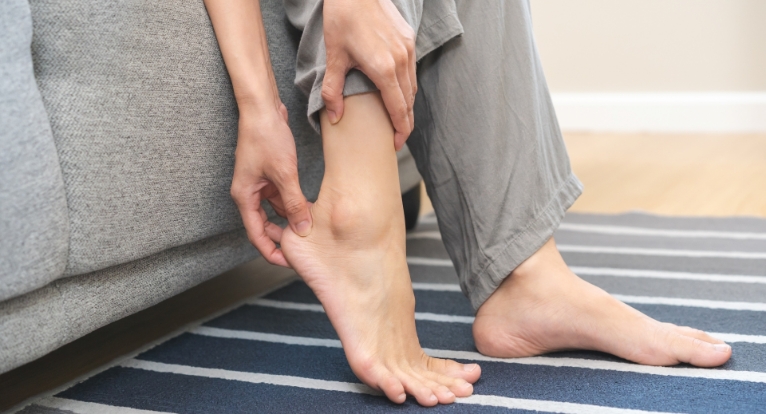
Note: The stretches in this post are not intended to replace the advice of a clinician. If you are unsure about them, please check with your therapist.
Plantar fasciitis is a common cause of heel pain
At least 1 million people are currently affected by plantar fasciitis. It is estimated that up to 10% of people worldwide will be affected by this foot condition at least once their lifetime.
Understanding your foot
The foot is a complex assembly composed of 26 bones, 30 joints and more than 100 muscles, tendons and ligaments. Healthy balanced feet will help you stay mobile and stable throughout everyday activities. This “balancing act” starts with the plantar fascia.
What is the plantar fascia?
The plantar fascia is the longest band of thick fibrous tissue in the foot. It runs from your heel to the base of your toes. It helps form the longitudinal and medial arch of your foot.
The plantar fascia ,together with the small intrinsic muscles of the foot, play an important role in sensation and motor control of your feet. This sensation and motor control is important for coordinated activities like walking or running.
Are you at risk for plantar fasciitis?
If you’re someone who is actively on their feet all day or someone who is spending a lot of time sitting at your desk, it’s understandable why you may suffer from plantar fasciitis. In fact, individuals who are highly active are at the greatest risk for plantar fasciitis, but sedentary individuals are also a high risk.
Some common risk factors include a highly active running regime, prolonged standing or sitting, decreased ankle range of motion, calf tightness, flat-footed, high-arched feet and obesity.
What causes plantar fasciitis?
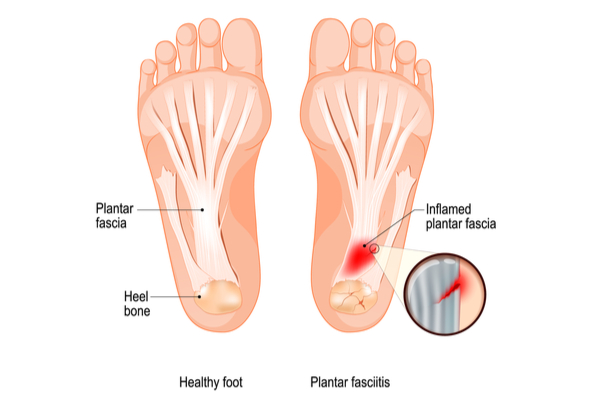
Upon sudden weight bearing, most of the load falls between your big toe to your heel, also known as the medial edge of your plantar fascia.
As your plantar fascia helps to form the arch of your foot, any excessive load or chronic overload on the arch stretches the plantar fascia. This can lead to injuries occurring at the attachment site of the plantar fascia, otherwise known as the medial calcaneal process.
Why do I have pain?
The pain is often gradual and most noticeable when taking the first few steps after a long period of inactivity. Most people report pain first thing in the morning or when they stand after a long period of sitting at a desk.
There might be temporary pain relief after a short period of activity (e.g. like walking) but the pain quickly returns after prolonged weight-bearing activities. You are probably wondering: “what can I do to help ease this pain?”
First things first, you should see a physiotherapist if you haven’t already, They can determining cause of injury and an appropriate course of rehabilitation.
They will most certainly help you get back on your feet. In fact, a large majority (90-95%) of people experience symptom resolution within a year’s time.
What can you do at home?
Activity modifications
The first course of action should be modifying the activities that cause your plantar fasciitis pain. Activities that involve repetitive impacts (e.g. running) should be avoided initially.
Seek other activities that are non-weight bearing, like cycling. If you are experiencing no pain or tenderness on the plantar fascia for 4-6 weeks, then speak with your physiotherapist to see if you can return to normal activities.
Plantar fascia and calf stretches
In many instances, pain and symptoms from plantar fasciitis can be alleviated by simply stretching the fascia and your calf muscles before going to sleep, before getting out of bed, and/or before getting up after prolonged sitting at your desk.
Calf and plantar fascia stretch using a towel or band
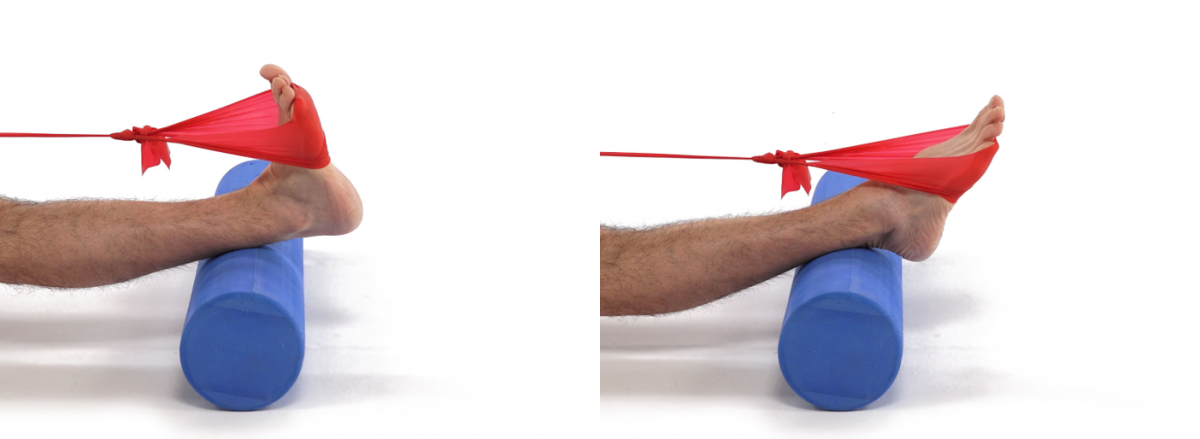
Pull back on foot for 30 seconds 3 times with 30 seconds of rest in between.
Plantar fascia stretch with massage
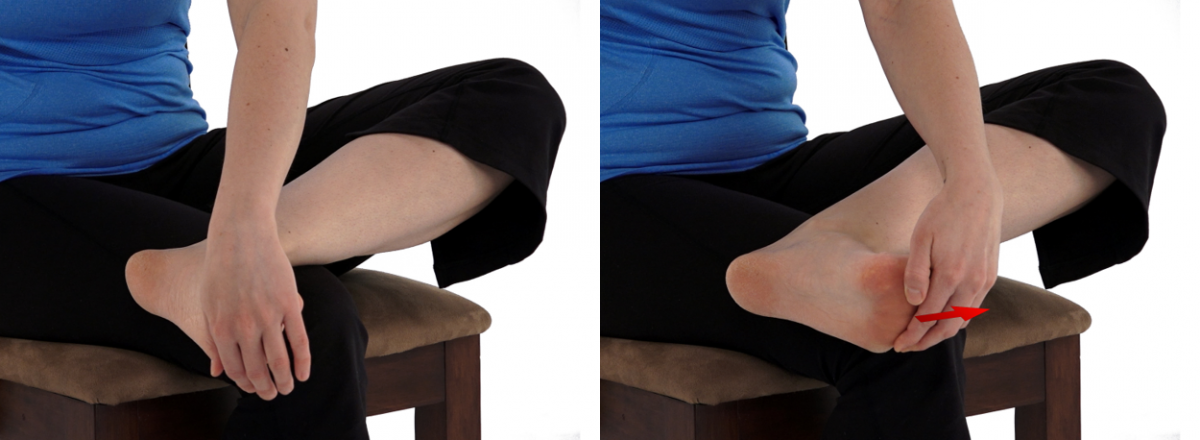
Pull back on your toes, stretch and massage the plantar fascia as tolerated for 1 minute 3 times with 30 seconds of rest in between.
Roll plantar fascia with can, ball or frozen bottle
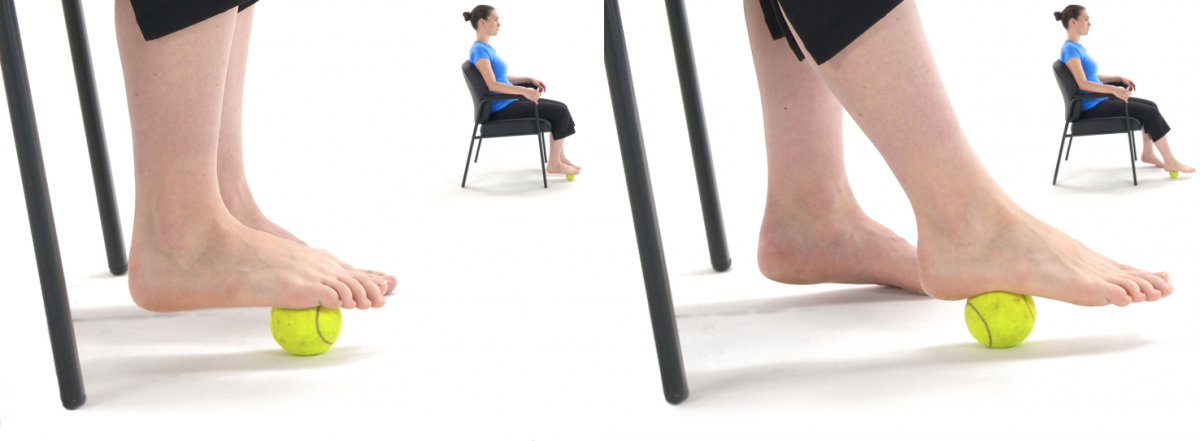
While standing or sitting, roll plantar fascia as tolerated for 1 minute 3 times with 30 seconds of reset in between.
Footwear modification
Proper footwear or custom made orthotics may also play a role in treating and preventing plantar fasciitis by reducing motion (e.g. excessive pronation) that will relieve pressure on the fascia. Speak to your physiotherapist to examine whether footwear modifications are an ideal treatment for you.
Plantar fasciitis is a common foot problem for many people worldwide. Luckily, the recovery for most people is generally effective and well-tolerated if a variety of treatment modalities are used in combination with your home exercises.
To schedule an appointment, contact a pt Health clinic near you or book an appointment online.
This blog originally appeared on Lifemark.ca and was written by Kevin Moncion, an MSc PT/PhD Candidate at McMaster University.
